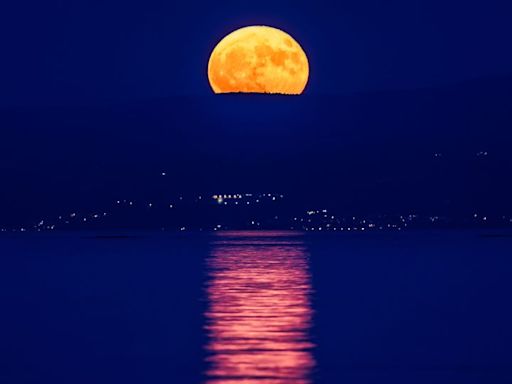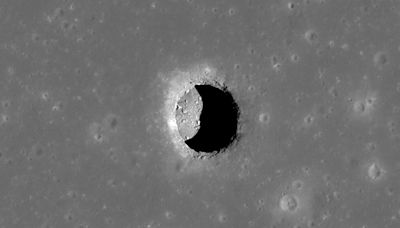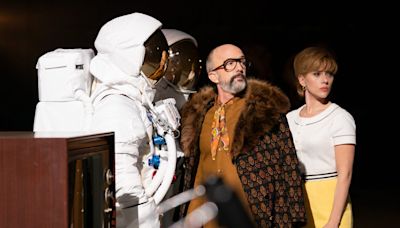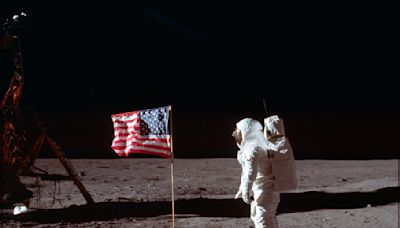Search results
The Earth and the Moon form the Earth-Moon satellite system with a shared center of mass, or barycenter. This barycenter is 1,700 km (1,100 mi) (about a quarter of Earth's radius) beneath the Earth's surface. The Moon's orbit is slightly elliptical, with an orbital eccentricity of 0.055. [1]
Earth's Moon is the brightest and largest object in our night sky. The Moon makes Earth a more livable planet by moderating our home planet's wobble on its axis, leading to a relatively stable climate. It also causes tides, creating a rhythm that has guided humans for thousands of years.
Loading Moon Maps... Google Sky Maps will soon be sunsetted in favor of the experience offered in Google Maps in Space and Google Earth Desktop . For more information see our help center .
1 day ago · Moon, Earth ’s sole natural satellite and nearest large celestial body. Known since prehistoric times, it is the brightest object in the sky after the Sun. It is designated by the symbol ☽. Its name in English, like that of Earth, is of Germanic and Old English derivation.
5 days ago · The move of the rocket stage for Artemis marks the first time since the Apollo Program that a fully assembled Moon rocket stage for a crewed mission rolled out from NASA Michoud. The SLS rocket’s core stage is the largest NASA has ever produced. At 212 feet tall, it consists of five major elements, including two huge propellant tanks that ...
Like Earth, the Moon has a day side and a night side, which change as the Moon rotates. Moon Phases Between four and seven times a year, Earth, Moon and Sun line up just right to create the cosmic-scale shadow show known as an eclipse.
From Earth, it might look like the Moon is changing shape each night – from a tiny sliver to a half moon to a full moon and back again. What’s actually happening is that from our spot on Earth, we see different parts of the Moon lit up by the Sun as the Moon travels in its orbit.
May 22, 2024 · A moon is an object that orbits a planet or something else that is not a star. Besides planets, moons can circle dwarf planets , large asteroids , and other bodies. Objects that orbit other objects are also called satellites , so moons are sometimes called natural satellites .
Introduction. The brightest and largest object in our night sky, the Moon makes Earth a more livable planet by moderating our home planet's wobble on its axis, leading to a relatively stable climate. It also causes tides, creating a rhythm that has guided humans for thousands of years.
Sep 7, 2023 · Studying and understanding the Moon offers valuable insights into the cosmos and our place within it. So, the next time you look up at the Moon, remember that it’s more than just meets the eye.





